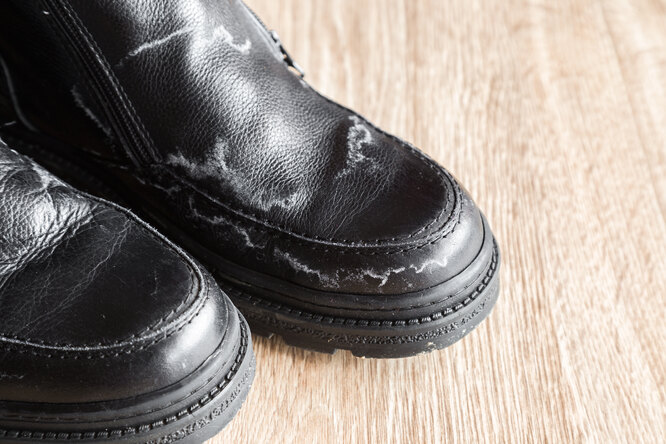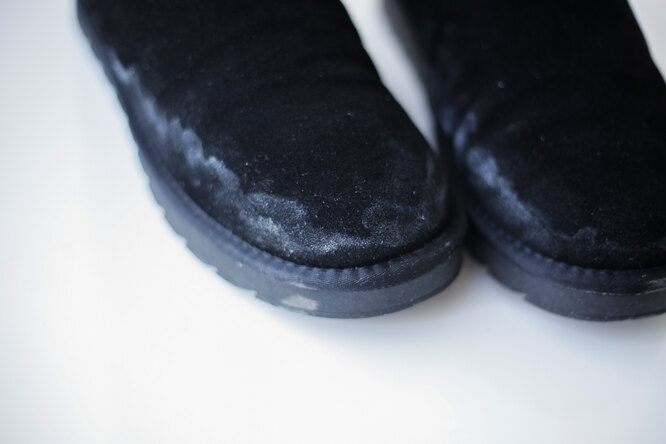Don’t delay in removing salt stains from your shoes, otherwise the marks will stay on them forever!
Before talking about removing reagent stains from shoes, let’s figure out what they sprinkle on our roads in winter. Most are based on salts – potassium, sodium, calcium, ammonium, formic or acetic acid. The mass may also contain impurities – zinc, nickel, mercury, cadmium, selenium and arsenic. They have nothing to do with the fight against ice, the fact is that road salt very often becomes industrial waste.
Everyone should know effective ways to clean shoes from salt and reagent stains – these substances not only spoil the appearance of shoes, but also corrode the material. Take the roadmap – we’ll tell you what to use and when.
What to add to water to remove salt stains from leather shoes
You will need:
- white vinegar 9%,
- soft fabric,
- optional – leather conditioner.
Vinegar for removing salt and chemical stains from leather shoes is the optimal solution. Dilute it in a bowl with equal parts water, dip a cloth in the solution, wring it out so that the cloth is damp but not dripping. Polish the marks and when they disappear, remove the remaining vinegar with a cloth dampened with clean water. Let the shoes dry. Apply leather conditioner to your boots to restore moisture levels lost through chemicals and cleaning.
ADVERTISING – CONTINUED BELOW








